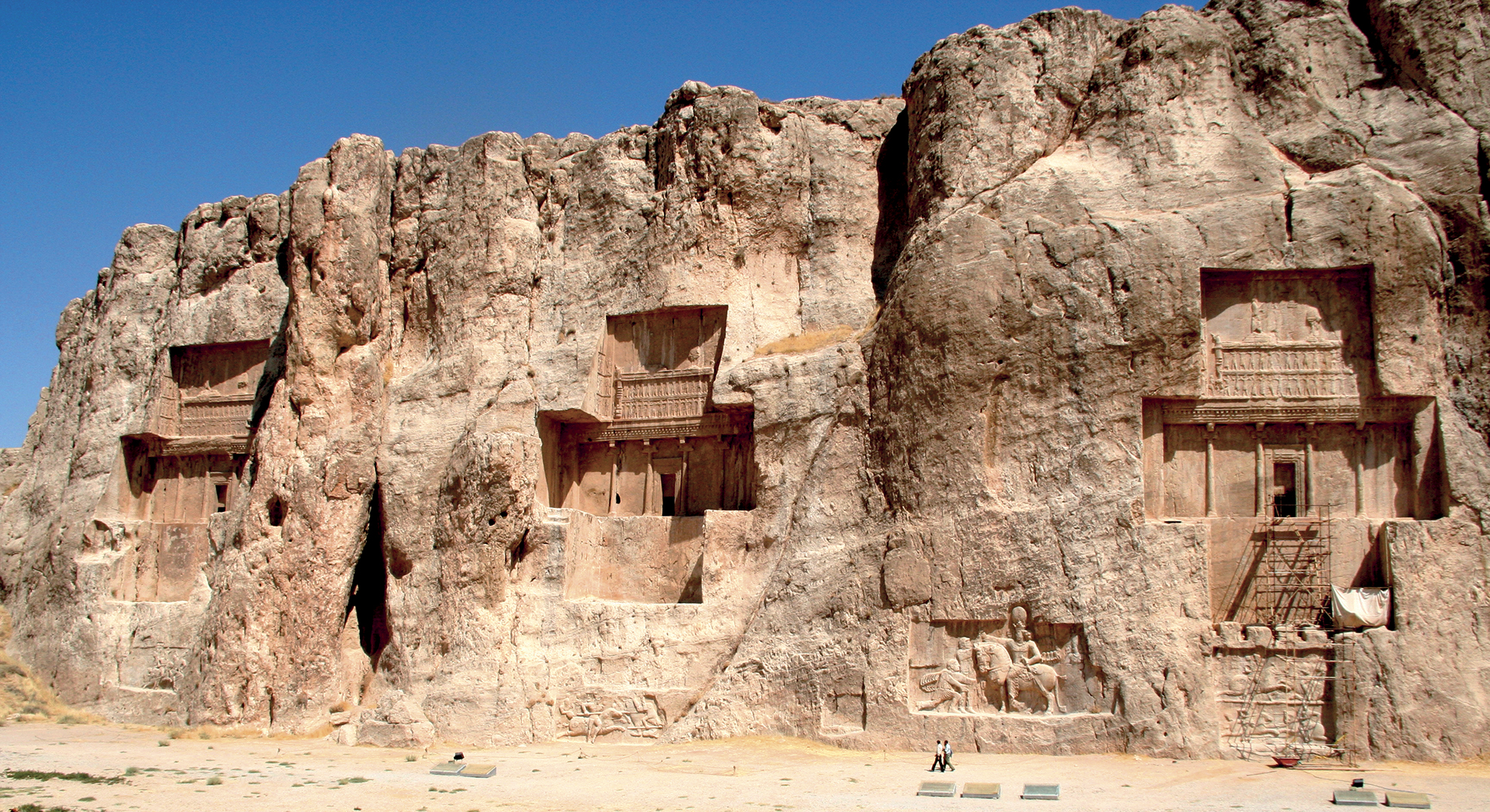
Bible, History, Archaeology
Bible,
History,
Archaeology
Susa in Persian times,
archaeological discoveries
General introduction
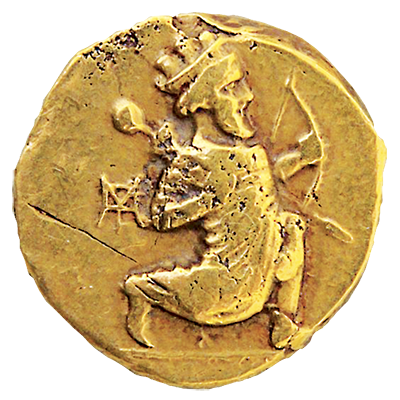
One of Cyrus II's successors, Darius I (522-486 BC), made Susa a royal residence alongside Persepolis and Pasargadae →. Located in western Iran, some 140 km east of the Tigris, Susa is at the heart of the ancient country of Elam. It became an important capital of a gigantic empire stretching from the Nile to the Indus, and one of the winter residences of the Persian rulers (Nehemiah 1:1). Its ruins, contained in three sections, are among the most important testimonies to the history of the ancient Near East, covering an area 2 km long and 1.400 km wide. The perimeter measures around 5 km, but if the ruins scattered further out are included, the perimeter reaches 9 to 11 km.
Image opposite: a gold daric, used in the Achaemenid Empire and its sphere of influence. Public domain.
The traditional tomb of the prophet Daniel in Susa, revered by Muslims and Jews alike, has stood in Susa since the Middle Ages. This curious, slender, honeycombed, conical edifice is typical of the local architecture of the Khuzestan province. Inspired By Maps. 1023915001.
Archaeological excavations in Susa
The location of the city of Susa has never been completely forgotten, not least because it was not destroyed by fire and that it contains a tomb traditionally attributed to the prophet Daniel, and has been the object of pilgrimages by both Muslims and Jews throughout history.

Further excavations were carried out by Jacques de Morgan (1891-1907), who in 1901 unearthed the high basalt stele of Hammurabi's Code of Laws in the middle of Susa's Acropolis., then by Roland de Mecquenem (1907-1935), Roman Ghirshman (1946-1966) and Jean Perrot (1967-1979).
When Darius I incorporated Susa into his empire in 539 B.C., this multimillennial city, devastated from top to bottom in 639 B.C. by the Assyrian king Assurbanipal, was no more than a shadow of its former self, but he decided to establish one of his capitals here. The 120-hectare site comprises three tells that tower 15 to 25 m above the plain on the banks of the River Chaour. The three tells are called « Royal City », « Apadana »and « Acropolis ».
The Royal City
It covers an area of 120 ha, and the popular dwellings of which it was composed have left few traces; it is surrounded by a glacis and a wide moat that was filled by the waters of the Chaour; on the axis of the road leading from the city to the Palace and the Apadana stood a building - the propylaea - in the form of a vestibule made up of two large halls, preceded and followed by a portico with two columns, the whole allowing the passage of chariots.

La Porte
«La Porte» is an imposing building (opposite, drawing by D. Ladiray), synonymous with the court and palace, as shown by the expression «those at the gate».» (Esther 2,21 or 3,2-3), which became a court title even in Babylonian tablets. The palace could only be accessed through it. In Susa, it is 28 m wide by 40 m long and 15 m high. It comprises three rooms, the largest of which was used by canvassers to wait to be questioned by the «gatekeepers», who either let them in or passed on their message to the «message bearers» if the audience was refused.. (Pierre Briant, History of the Persian Empire).
Once through the gate, a vast esplanade leads to the Royal Residence.
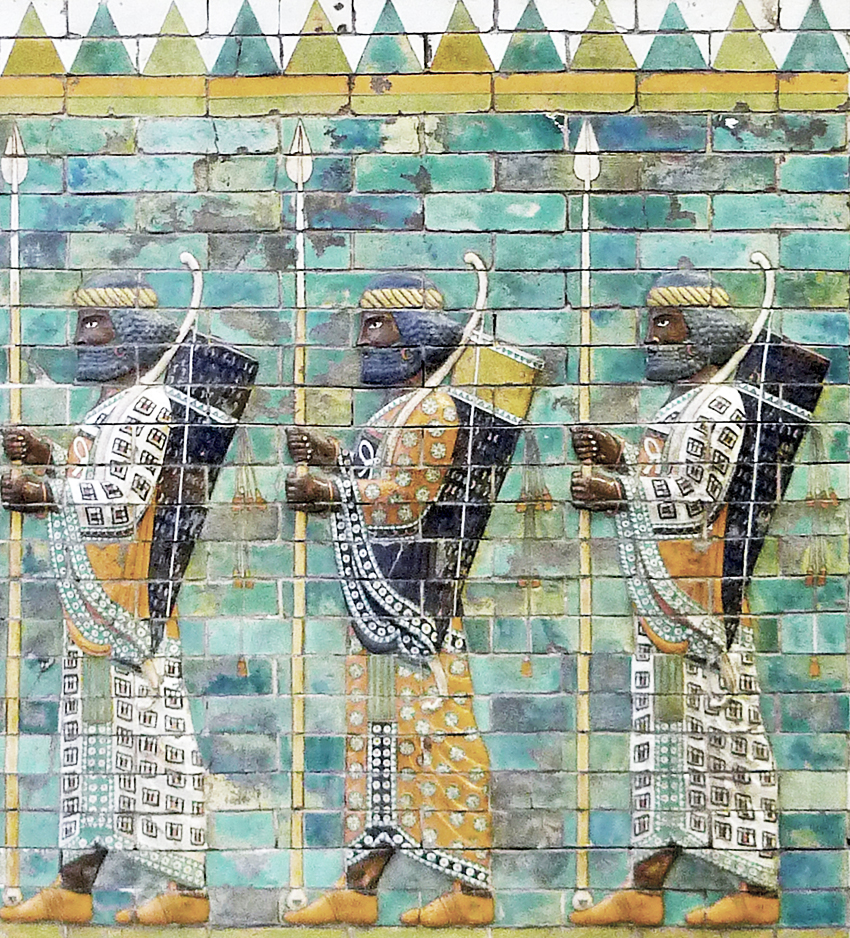
From the Royal Residence, All that remains of the palace are its foundations; it measures 38,000 m2 and comprises three courtyards opening onto the various buildings and the king's apartments. The walls of the palace's corridors and staircases are decorated with magnificent multicolored brick friezes. They show alignments of archers seen in profile as well as ferocious, fantastical animals: lions, sphinxes, winged bulls.
Image opposite: archers. They probably represent the «Immortals», the elite guards mentioned by Herodotus who accompanied the king on his campaigns, Berlin Museum © Theo Truschel.
All around the palace were gardens called «paradises», as in Neo-Assyrian times, in which exotic plants, trees and animals from all the empire's subjugated countries were gathered.
The Apadana
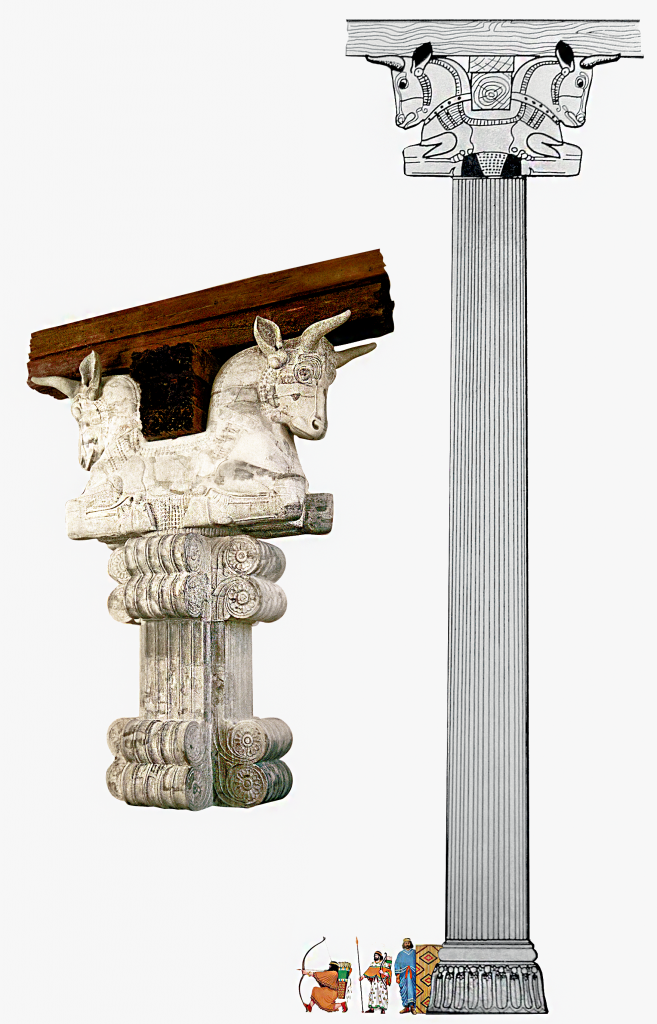
Image opposite: a drawing of one of the columns, with its capital, reaching 22 m in height. © Théo Truschel.
The Audience Hall was a hypostyle hall covering an area of around half a hectare. It contained 36 columns 22 metres high - 6 rows of 6 each - surmounted by capitals sculpted in the shape of kneeling bulls back to back (image opposite). Long beams of Lebanese cedar linked the massive columns together. The Apadana's columns alone symbolize the architectural influences of the empire: the campaniform base is Egyptian, the fluted shafts Ionian, the palmiform capital Egyptian, the double scrolls Phoenician and the impost in the form of animal busts Mesopotamian. Each column with its capital weighs over 25 tonnes. We have no indication of the Apadana's decoration.
Image below: Model of the palace of Darius I and Xerxes, Susa (Iran), rear view, circa 520-460 BC © Israel Museum, Jerusalem.
The Acropolis
All that remains today are a few ruins of a city wall, but Achaemenid Susa had no city walls - its elevated position on a glacis was enough to protect it.
The palace at Susa is a unique monument: its «Gate» is the prototype of the square-plan hall with four columns that was to become the preferred module of the architects of Persepolis, and is thus an important milestone in palatial architecture in this part of the world.
 The end of Susa (4th century BC)
The end of Susa (4th century BC)
The Persian Empire was defeated by Alexander the Great in 331 BC, and integrated into the Hellenistic Empire. In Susa, Alexander married two daughters of Darius III, to legitimize his power over Persia and unify his empire. After Alexander's death in 323 BC, the city slowly declined, suffering Parthian, Sassanid and Islamic invasions.
Image opposite: a Greek kylix (bowl) from the 5th century BC showing a duel between a Persian warrior and a hoplite. National Archaeological Museum, Athens. Public domain.
Deserted in the 15th century AD, a new Susa was repopulated near the old one in the 20th century on the banks of the river Chaour. Today, it has a population of over 60,000.
Three of the four royal rock tombs at Naqsh-e Rustam near Persepolis. The one on the right is that of Darius I, identified by the inscriptions engraved on the façade. Left: tombs of Darius II and Artaxerxes I. © Gilles Rheims.
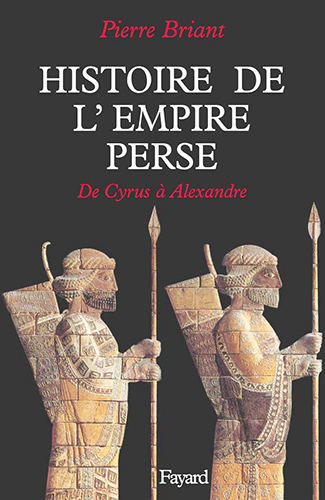
Find out more
BRIANT Pierre, History of the Persian Empire
From Cyrus to Alexander
Virtually unknown until now in the records of history, the Persian people, from their base in southern Iran (Fàrs), embarked around 550 B.C. on a prodigious adventure which, under the leadership of Cyrus the Great and his successors, led to the creation of an immense empire between Central Asia and Upper Egypt, between the Indus and the Danube.
Éditions Fayard, 1996, Paris.



 The end of Susa (4th century BC)
The end of Susa (4th century BC)